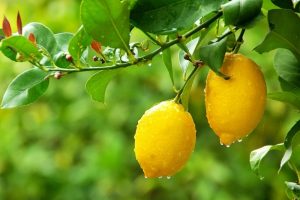
The yellow watermelon, an exotic oddity to taste and discover: the yellow watermelon was born in Japan but also finds its cultivation in Italy. Excellent for its health properties, it is increasingly sought after. Let’s get to know her.
From the lands of the East came the yellow watermelon which is a botanical graft obtained by the Japanese in a natural way, non-GMO, which allowed the birth of this yellow variety of watermelon with contained dimensions.
The yellow watermelon is known as coco-pineapple or Japanese watermelon due to its Asian origins. The flavor of the yellow watermelon is much appreciated for its delicacy in comparison with the traditional watermelon; the pulp is crunchy and more reminiscent of the sweetness of mango with a veiled taste of pineapple and prickly pear that makes it even more refined. These exotic fragrances make yellow watermelon a real delicacy increasingly appreciated by lovers of this summer fruit.
Composition and properties of yellow watermelon
Its composition varies compared to the traditional watermelon: the water content is higher up to over 95% and therefore the yellow watermelon is much more refreshing and refreshing. Its yellow color is given by the presence of beta-carotene. And other pigments that are precursors of vitamins such as vitamin A. Essential for the functioning of the retina and sight, serves for the development of bones, for the differentiation of tissues. It is very antioxidant powerful and is a cofactor of several enzymes. In addition, vitamin A helps protect the skin from aging. Keeps it healthy as well as strengthens the hair and mucous membranes of the whole body. The red color of the traditional watermelon instead is given by another pigment called lycopene which obviously is not present in the yellow watermelon, while it is still rich in vitamin C, fat-free, and low in calories.
As a mineral composition, it is rich in potassium, a natural antibacterial. And supports problems concerning body fluids and the distribution of liquids in the body. In conclusion, the yellow watermelon has moisturizing, refreshing. And purifying properties are even better than the traditional red watermelon. And can thus become part of the summer diet precisely for these healthy and organoleptic characteristics.
Where we find the yellow watermelon
Currently, this yellow watermelon has also been imported. And cultivated in Italy where it has found an environment suitable for its growth and is thus produced in our southern lands. In particular, Basilicata and Sicily produce it. And the lands where it is most renowned are in the Agrigento area of Aragona.
Another good production of yellow watermelon is found in Lazio within the Agro Pontino area. These homegrown crops are of excellent quality. And have now found their greatest sale to the public in the local farmers’ markets. Even if they are slowly arriving on the supermarket counters of the largest organized chains. The availability of this yellow watermelon also sees some small family productions that come from garden enthusiasts especially when orthomania leads to the search for particular and more extravagant varieties. So let’s get to know better how yellow watermelon is made and how we can grow it.
Yellow watermelon, differences, and cultivation
The yellow watermelon differs from the traditional red watermelon not only for its composition and color but also for its small size and thinner skin. Its weight can be indicative of a few kilograms up to a maximum of ten kilos. Its peel is slightly spotted and we can find two types of yellow watermelon. One with a green striped color and the other instead is dotted with spots similar to a crescent. This cultivation is seen as the first point sowing from February to March in protected seedbeds or in open fields from April to May.
In case we want to buy the seedlings from some specialized nursery or agrarian. Then this operation can always take place in the open field from late spring; if. On the https://naturallydaily.com/tramadol-online-100-mg/ other hand, we want to start from the seed. The availability of this yellow watermelon variety is easier on the online sites most stocked with green products and for enthusiasts.
Once grown in the seedbed, these seedlings will have to be transplanted outdoors. And this will be possible only after the seedlings are a minimum of 10 centimeters and have developed at least 2 stages of leaves. When watermelon plants have been planted and grown in size. The stoutest branches with flowers spaced far enough apart are usually cut and kept to produce future watermelons.
The harvest will take place from June until the end of August. To recognize the moment of harvest, look at that the stalk that unites the plant to the fruit is drying up. And that at the touch of the hands the sound of the watermelon is beautifully full, which denotes optimal ripeness. It will then be sufficient to keep the yellow watermelons in a cool place and then enjoy them as desired.





